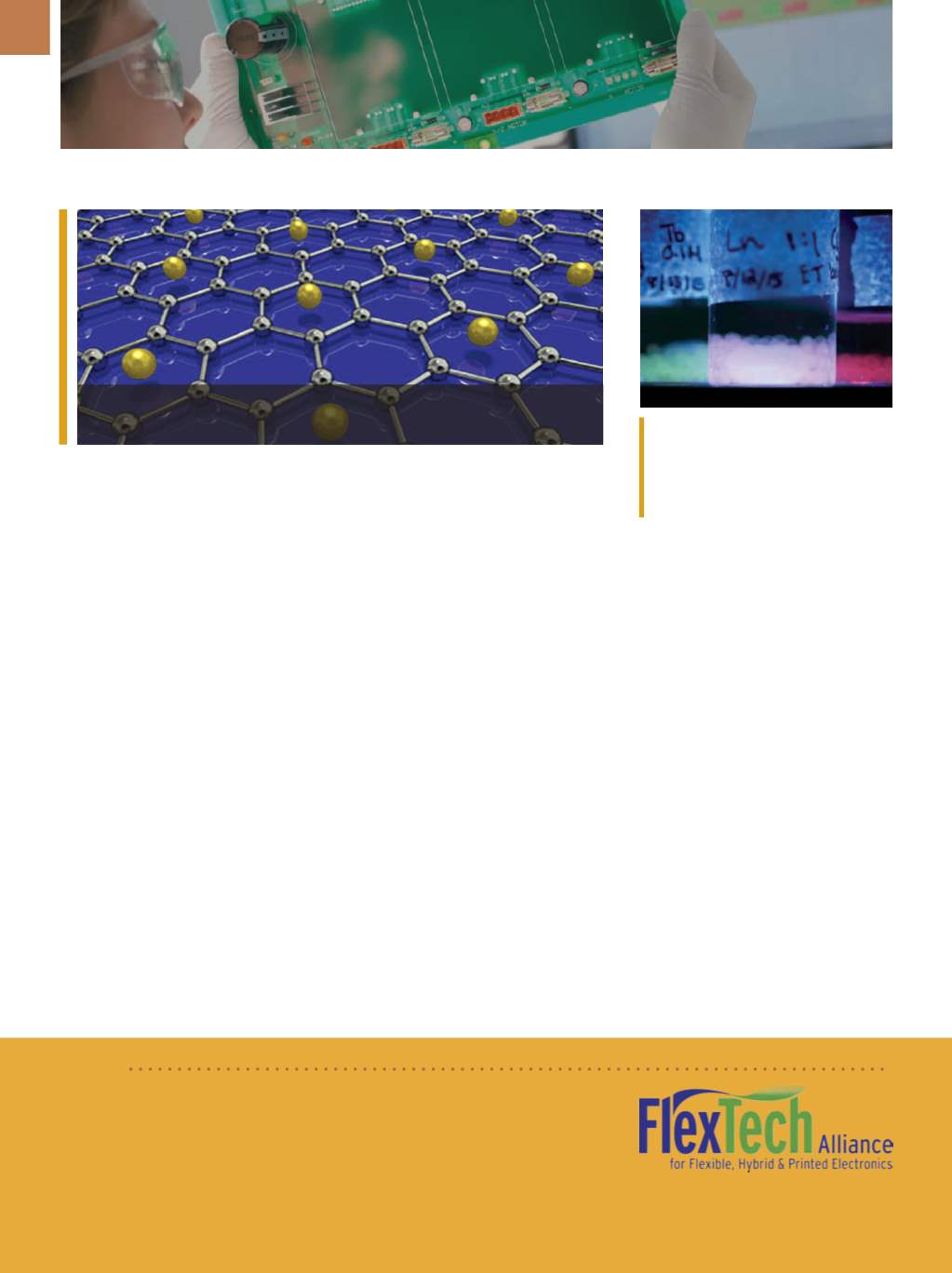

SUPERCONDUCTING
GRAPHENE DEBUTS IN CANADA
Physicists at the University of Brit-
ish Columbia (UBC), Canada, report
creating the first-ever superconducting
graphene sample by coating it with lith-
ium atoms. Although superconductivity
has already been observed in interca-
lated bulk graphite, inducing supercon-
ductivity in single-layer graphene has
eluded scientists until now.
“Decorating monolayer graphene
with a layer of lithium atoms enhanc-
es the graphene’s electron-phonon
coupling to the point where supercon-
ductivity can be stabilized,” explains
researcher Bart Ludbrook.
Given the massive scientific and
technological interest, the ability to in-
duce superconductivity in single-layer
graphene promises to have significant
cross-disciplinary impacts. According
to financial reports, the global mar-
ket for graphene reached $9 million in
2014 with most sales in the semicon-
ductor, electronics, battery, energy,
and composites industries. The re-
searchers, including colleagues at the
Max Planck Institute for Solid State
Research, Germany, through the joint
Max-Planck-UBC Centre for Quantum
Materials, prepared the Li-decorated
graphene in ultra-high vacuum condi-
tions and at ultra-low temperatures of
-449°F (-267°C) to achieve this break-
through.
www.ubc.ca.
METALLIC GELS HOLD PROMISE
FOR FAILURE PREVENTION
Researchers at Massachusetts In-
stitute of Technology, Cambridge, de-
veloped a new family of materials that
can emit light of precisely controlled
colors and whose output can be tuned
to respond to a wide variety of external
conditions. The materials could find
applications in detecting chemical and
biological compounds, or mechanical
and thermal conditions.
These light-emitting lanthanide
metallogels can be chemically tuned to
emit light in response to chemical, me-
chanical, or thermal stimuli, potentially
University of British Columbia physicists created the first superconducting graphene
sample by coating it with lithium atoms.
Luminescent materials produced by the
MIT team shown under ultraviolet light,
emitting different colors of light that can
be modified by their environmental con-
ditions. Courtesy of Tara Fadenrecht.
BRIEF
The
U.S. Department of Defense
awarded
FlexTech Alliance
a cooperative
agreement to establish and manage a
Manufacturing Innovation Institute for
Flexible Hybrid Electronics
based in San Jose, Calif. The Alliance is comprised
of 96 companies, 11 laboratories and nonprofits, 42 universities, and 14 state
and regional organizations. The $75 million award, distributed over a five-year
period, will be matched by more than $96 million in cost sharing from nonfed-
eral sources, including the City of San Jose.
flextech.org.
providing a visible output to indicate
the presence of a particular substance
or condition. Combining a metal from
the lanthanide group with polyethylene
glycol results in a material that produc-
es tunable, multicolored light emis-
sions. These emissions can then reflect
very subtle changes in the environment,
providing a color-coded output that re-
veals details of those conditions, says
assistant professor of materials science
and engineering Niels Holten-Anders-
en. The materials can also detect me-
chanical changes, and could be used to
detect stresses in mechanical systems.
For example, it’s difficult to measure
forces in fluids, Holten-Andersen says,
but this approach could provide a sen-
sitive means of doing so. The material
can be made in a gel, thin film, or coat-
ing that could be applied to structures,
potentially indicating a developing fail-
ure before it occurs.
mit.edu.
EMERGING TECHNOLOGY
A D V A N C E D M A T E R I A L S & P R O C E S S E S | N O V E M B E R / D E C E M B E R 2 0 1 5
1 2


















